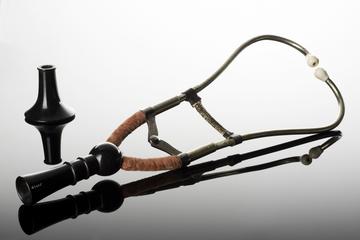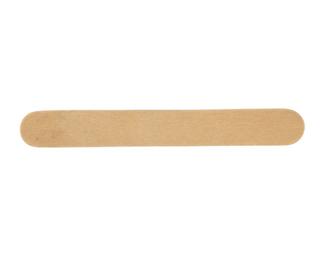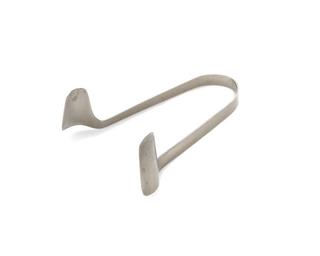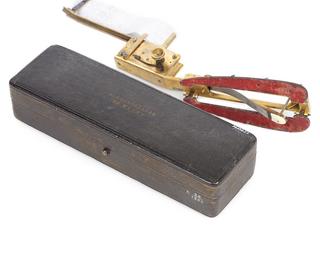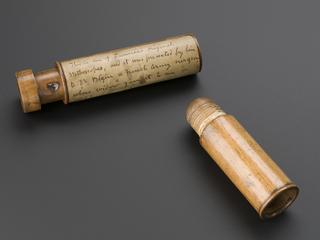
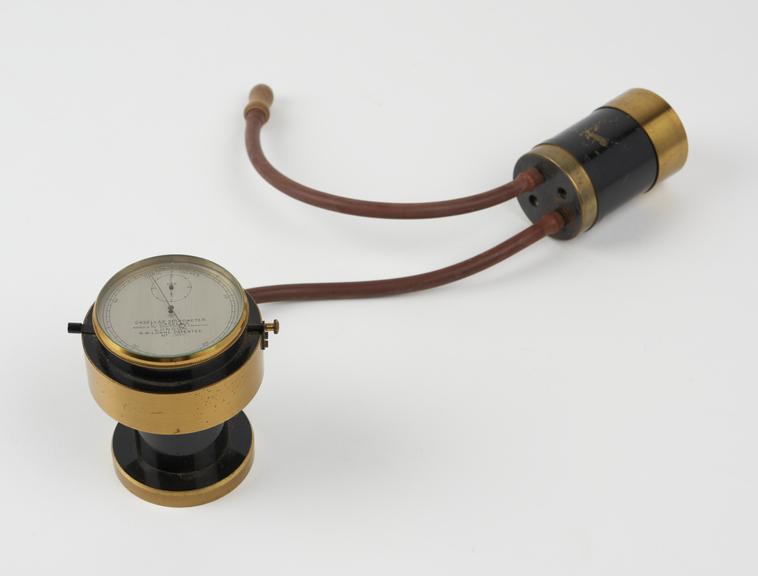
Spirometer, made and modified by Louis Casella, London, invented by Robert Mann Lowne, c.1874
A spirometer measured the ‘vital capacity’ of the lungs. This means the largest amount of air they can hold, which can indicate the health of the respiratory system. They also indicated improvement or deterioration in conditions such as tuberculosis.
The patient’s breath bubbled up a water-filled collecting glass and pushed up a sliding weight. A scale on the attached spirometer indicated the capacity of the lungs.
Robert Mann Lowne was an inventor and instrument maker whose first patent was for a spirometer, granted in 1872 and Louis Casella modified in the same year.
Details
- Category:
- Clinical Diagnosis
- Object Number:
- 1978-584
- Materials:
- brass (copper, zinc alloy), rubber (unidentified) and glass
- type:
- spirometer
- credit:
- Simon Kaye Ltd.
